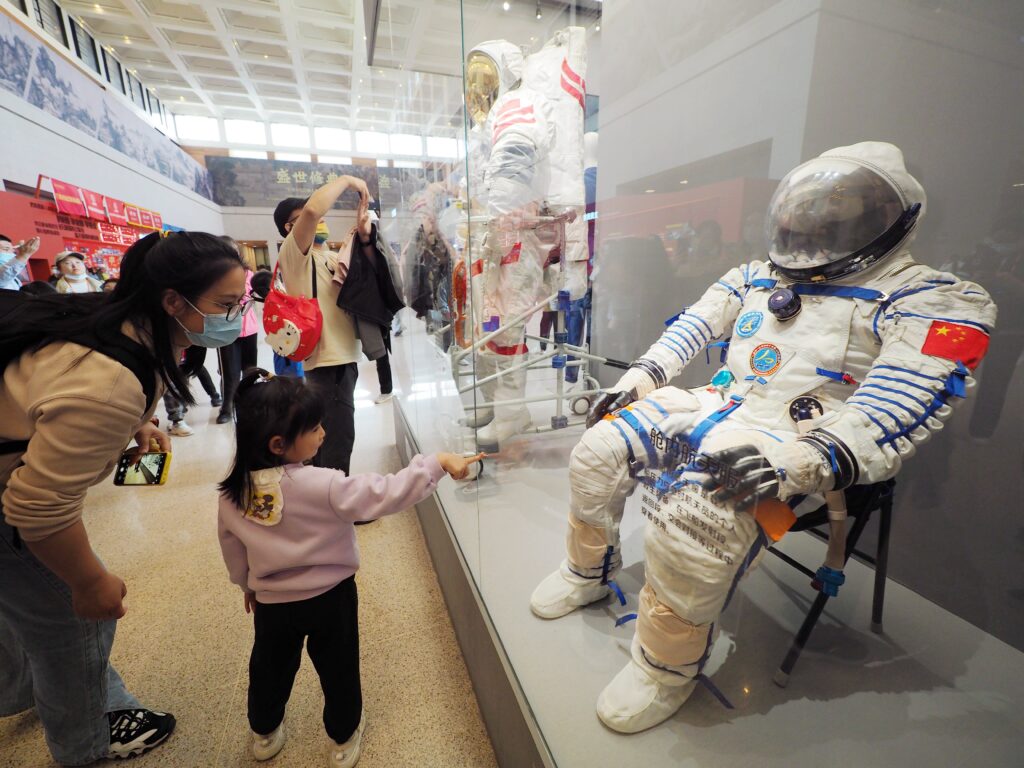Lunar landings by China, India and Japan have catapulted Asia to the forefront of the space domain, and fuelled talk of a new space race. Their rise has also generated arguments both for and against multipolarity in the international space order.
In 2013, China landed a spacecraft Chang’e-3, which included a small rover named Yutu, onto the moon, followed with the soft landing of Chang’e 4, also with a rover, for the first time ever on the far side of the Moon in 2019.
India followed suit in 2023, garnering a historic first for its soft landing of Chandrayaan-3 on the lunar south pole. Japan made an upside-down lunar landing with SLIM, becoming the fifth country to make it to the lunar surface in 2024. Then in May 2024, China sent Chang’e-6 to the Moon, a historic first effort to return samples from the far side of the Moon.
The new international space order is unmistakably bipolar, marked by intense competition between the United States and China. As leaders of the two working space stations in orbit today, they are contesting over military might, industrial innovation and normative influence in the space domain in ways that other countries cannot match. Both the United States and China want the new international space order to reflect their interests in the arrangement of rules and the distribution of power.
The new international space order has many parallels with the old space race during the Cold War. There is most obviously the competitive race to the Moon — the hallmark of the old international space order — in which the two sides watched the others’ moves closely. In terms of absolute firsts, the Soviets beat everyone — the Soviet Luna 2 spacecraft was the first to impact the lunar surface in 1959. But the United States landed the first humans on the Moon in 1969.
Now, as it did then, space competition leads to US anxieties about civilian–military technology linkages and falling behind its competitors. Techno-nationalism is also foundational to the new international space order. Industrial policy has been legitimised by recent US moves, and this construct is resurfacing in newer debates about ‘techno-security space innovation’.
But the new international space order differs from the past, complicating strategies for both the United States and China. Today, the space domain is democratised, with many more states interested in the advantages of dual-use technology. Space is also marked by unprecedented commercial technologies, with entrepreneurs boldly going beyond government visions. There is also a definite slide towards weaponisation, evident in destructive anti-satellite tests by China, the United States, India and Russia. The possibility of nuclear-armed satellites is also alarming. Meanwhile, support for arms-control agreements is flailing and a cascade of exits from the Outer Space Treaty is possible.
Bipolar alliance architectures are extending to the Moon in two separate lunar infrastructure visions. The US-led Artemis Accords, now with 39 signatories, sets out principles for civil exploration of the moon and beyond. Japan and India have both signed up, as have other players across Europe and the Asia Pacific. Artemis missions include Gateway, an outpost in the lunar orbit, to enable Moon operations for the United States and its partners.
This US endeavour has a counterpart in the Chinese-led International Lunar Research Station. China has aligned with Russia through a memorandum of understanding, and is looking to set up an international organisation to coordinate activities. Ten nations have either joined or plan to join this enterprise, including Turkey, a member of NATO.
The new international space order is also marked by competition over the underlying rules for state activities on the Moon. No one contests that Article II of the 1967 Outer Space Treaty prohibits national appropriation on the Moon. What is contested is the interpretation of the principle. The United States has preemptively positioned itself as the de facto rule-interpreter on this front, and the Artemis Accords signal that move.
But China is also competing on the rule-making front. These efforts benefit from its stewardship of infrastructure projects, as well as regional and international organisations. China’s partners include Russia and Pakistan, members of the Asia-Pacific Space Cooperation Organization, and participants in the Space Information Corridor anchored in China’s Belt and Road Initiative. To legitimise moves to interpret the 1967 Outer Space Treaty, China may counter Artemis with its Space Law Alliance.
Formal NATO or Artemis allies of the United States are not averse to cooperating with China on its lunar missions. Their hybrid moves complicate prospects for neat alignments for both sides. Russia is still on board the ageing International Space Station. Pakistan, France, Sweden and Italy also sent payloads on China’s Chang’e-6.
The new international space order signals a historical moment in the space domain. It will test the idea that bipolarity will induce restraint in the international relations of space and lead to more stability from the Earth to the Moon. The future depends on how the United States and China take up the leadership mantle.
Saadia M Pekkanen is the Job and Gertrud Tamaki Endowed Professor and the founding director of the Space Law, Data, and Policy Program at the University of Washington, and the founding Co-Chair of the U.S.-Japan Space Forum.

